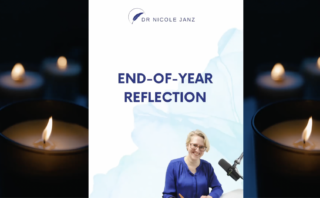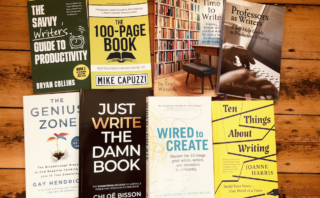A deep connection with your audience doesn’t come from facts and knowledge. It comes from your inner child.
“The teachings of the heart, and the revelations of the soul all assure us that no human being is ever beyond redemption. The possibility of renewal exists so long as life exists. How to support that possibility in others and in ourselves is the ultimate question.” —Gabor Maté, In the Realm of Hungry Ghosts
Do you keep publishing value-based articles, but people don’t react? You create speeches and the audience’s reaction is lukewarm? You know your advice works, but your audience won’t engage?
It’s likely that your content is lacking an ‘emotional bridge’.
An emotional bridge is a connection between a true, honest version of you and the true, honest version of your reader.
Finding that bridge is the biggest hurdle content creators and non-fiction authors struggle with. Because that human connection is hard to pinpoint. It exists almost on another frequency. A frequency of vulnerability and emotion that we usually try to lock away.
I see it in my own articles, podcasts and social media posts. For example, I received heartfelt reactions — and booked clients — from pieces like How to Avoid December Burnout or Burnout Didn’t Happen To Me, It Happened For Me. But my problem-solving articles about how to write productively (with my best tips that work in 1–1 consults) seem go into the void.
What I learned the hard way is this:
Don’t speak directly to your reader’s analytical brain. Instead, touch the heart first, and they will listen.
Writing from emotion is important for three reasons
What I’ve learned from 20 years as a journalist, an academic, and book coach, is this:
- You will never connect deeply to your audience if you produce variations of the same intellectually derived how-to advice anyone else can publish.
- Your content creation will become a chore if you don’t ‘feel’ anything stirring inside of yourself, and the reader will feel that, too.
- Your audience engagement will remain disappointing if the emotional bridge is missing — even though your facts are insightful and could help so many more people.
Here’s how to start developing that emotional bridge. The concept comes directly from what I’ve learned in my own writing; from coaching non-fiction authors and content creators; my disappointment in ‘ignored’ podcast interviews; my deepest fears uncovered in therapy; and my complete failures.
What triggers your own emotions ?
The starting point of an emotional bridge is you. Or more accurately, your inner fears, worries, struggles, desires, frustrations, disappointments. No one has ever built a deep, meaningful connection with an audience without awareness of those emotions — even though we do everything to push them away.
Inside of you is what psychologists sometimes call your ‘inner child’.’ That version of you who was hurt, felt alone, or had unfulfilled needs. You’ve probably had situations in your life, with a co-worker, family member or strangers where you felt intense emotional reactions, like anger or stress, that felt bigger than the situation itself.
That was probably your inner child being triggered.
You don’t have to bring out all your trauma or take therapy sessions to be a writer who resonates, but if you’re not in touch with your inner child, your writing won’t connect with your audience.
You and your reader might briefly agree on facts and insights, but that doesn’t go deep enough to make them want to work with you, remember you, or eager to read more of your content. The connection will be short-lived.
What deeply resonates with your readers and builds that emotional bridge is a story that gives them a glimpse into that vulnerable part of you that you’re usually hiding.
Here are 7 journaling questions to explore the emotional bridge
- Think about a time in your life when you felt ignored, alone, or unsupported as a child. What happened? Who was with you? What did you urgently need, but you didn’t get it? How old were you?
- How does that influence your life now? Do you feel ignored or unseen in certain situations? What are those trigger moments?
- What are some healing actions, people and communities that help you soothe your inner child?
- Where have you felt the happiest, like you could let go and breathe and enjoy? (If there are no such moments in your life, be creative and imagine how it would look like in the future, in all its detail.)
- In order to get more of those delightful healing moments, what inner barriers or fears do you have to overcome?
- What courageous steps did you take in your life to take action towards what you really want? Even if they are tiny?
- What is your biggest victory, in childhood or now? When did you achieve something against all odds — something that felt absolutely impossible. How did you manage that? What gave you the purpose, hope, and drive?
And finally, once you have journaled and opened up to your inner child, ask yourself this:
- How might my reader feel the same?
My own story of vulnerability
I’ll let you into my world for a minute, so you can see what I mean (and boy, does this feel hard…).
When I was six years old, I went to a holiday camp with other kids while my parents looked after my baby brother. The day I returned, my life changed completely. When the bus full of children arrived in the parking lot, I was surprised to see a friend of the family standing next to my mum. I ran up to her, we hugged, and I climbed into the backseat. As we started driving, I leaned forward and asked, “Where is Papa? Why didn’t he come to pick me up?” My mum didn’t answer, but I saw her shoulders shaking, and a suffocating sound escaped her that I’ll never forget. No one said anything, and I knew instantly that my father had died.
Have you ever had a moment of complete devastation, when you just knew in your gut that something terrible had happened?
To this day, I have to make a conscious effort to soothe myself when a feeling of loss and abandonment gets triggered. The situations might be mundane: when I get ready to travel (even worse when I leave my kids behind); when a friend declines a dinner invite; when a writer that I thought I writer I clicked with chooses not to collaborate with me; when a relationship breaks down; when my sibling doesn’t call back for days. In those moments, I have to remember where the trigger lies, and center myself. Over time, I learned to calm my nervous system with meditation, breathing and journaling.
How does any of this help me create an emotional bridge?
I’ve realised that I’m a coach and writer not in spite of that pain. But because of it. I am in touch with my inner child. I actively work through the pain. And that gives me the intuition to see when someone I work with suppresses their pain. If it serves their story, we unlock it together and their story is created from vulnerability and emotion, not from analysis and facts. Rather than ignoring my past, I allow my inner child to show up and I trust that it can help me connect with other human beings, and support them do the same.
Does that resonate? When you read the above, did you think of a story in your own life where you felt that your world turned upside down?
And what drives you to be a creator? Where do you do build emotional bridges with your audience?
You don’t have to give your readers everything
Of course, not all of your pain, struggles, fears and deepest disappointments need to go into your content. It is your choice what you share.
Often, only a glimpse is enough. And if you don’t want to get personal, simply journal about some of the questions raised here at the start of your next writing session. Explore, breathe, and then write your piece from the state of vulnerability, honesty, and bravery (even though the exact details remain yours alone).
Also, there are no clear-cut answers to the journaling questions above. You might get different answers and insights every time you journal about yourself, from pain to worry to unmet desires throughout your life (they have the tendency to come up once in a while).
You are not one story; you are many stories, and all of them serve you to be a better creator.
The habit of being in touch with your inner child is going to help you show up as someone who your readers can connect with.
It stirs something in them, and if they open up to that, the bridge is built.
Finally, it’s uncomfortable to go deep and re-live your thoughts and feelings from difficult moments of your life. I wrote this article on a weekend morning, while my kids slept and I could allow myself the space to visit my inner child and hold her. Losing your parent at a young age creates a hole that will probably never be filled. But life can still be creative, enriching, and meaningful. Do take a breath when you need it, remember that all you’re doing is showing up as your full, empathic self.
Being in touch with yourself is the first step to building an emotional bridge to your audience – so they can truly hear your message.
Download your free book starter kit to create an emotional bridge to your readers — it works for shorter content, too!
Photo by Annie Spratt on Unsplash





